Vietnam Robusta coffee farming model is a success, not only because of the size of the industry, but also through its remarkable growth rate from a humble beginning. In a quarter of a century, from 1990 to 2015, coffee production in Vietnam increased from 92,000 tons to 1.6 million tons, and reached 1.8 million tons in 2019. Vietnam is now the second largest coffee producer. 2 in the world and is the largest producer of Robusta coffee (40% of total Robusta production) and contributes about 10% of total global coffee production.
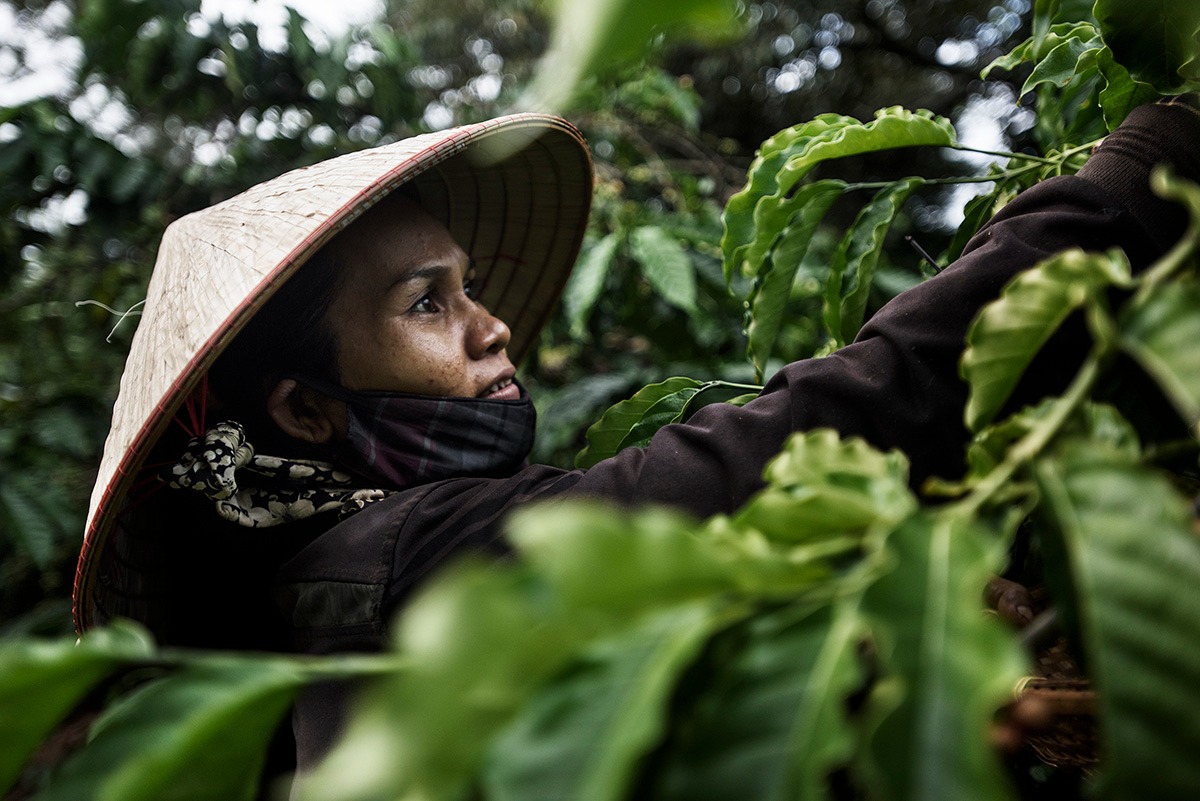
Vietnam has developed a very successful Robusta coffee monoculture model. High yields are key to profitability, as Robusta is a relatively simple and low value crop (compared to Arabica).
This study focuses on Robusta coffee as it accounts for 95% of coffee production in Vietnam. Beginning in 2006, the state attempted to rebalance Arabica and Robusta production with programs to increase the area planted to Arabica. However, arabica production has some idiosyncrasies that make it more complicated and so Arabica coffee will not be covered in detail in this article.
Vietnam’s coffee industry – more precisely, the Voi coffee tree has grown in a very short time. This overwhelming success requires focusing on certain goals. In which, the two main factors that make up Vietnam Robusta coffee tree are: resources and farming methods. We will explore how each of these factors has contributed to the development of Vietnam’s coffee industry.
1. Natural conditions are suitable
The growth of Robusta coffee trees in Vietnam is supported by the high quality of land available to grow. The Central Highlands provides a large area of fertile highland soil, which is almost considered a “clean slate” for the coffee industry to develop.
The soil in the Central Highlands is fertile, very suitable for coffee trees. In the Central Highlands, two main soil types, which deep, weathered soils originating from Basalt, described as Rhodic-Humic Gray Soil and Acric Gray Soil. In particular, Rhodic-Humic has a very low bulk density and allows good permeation and aeration and is ideal for perennials with relatively shallow roots such as Robusta coffee.
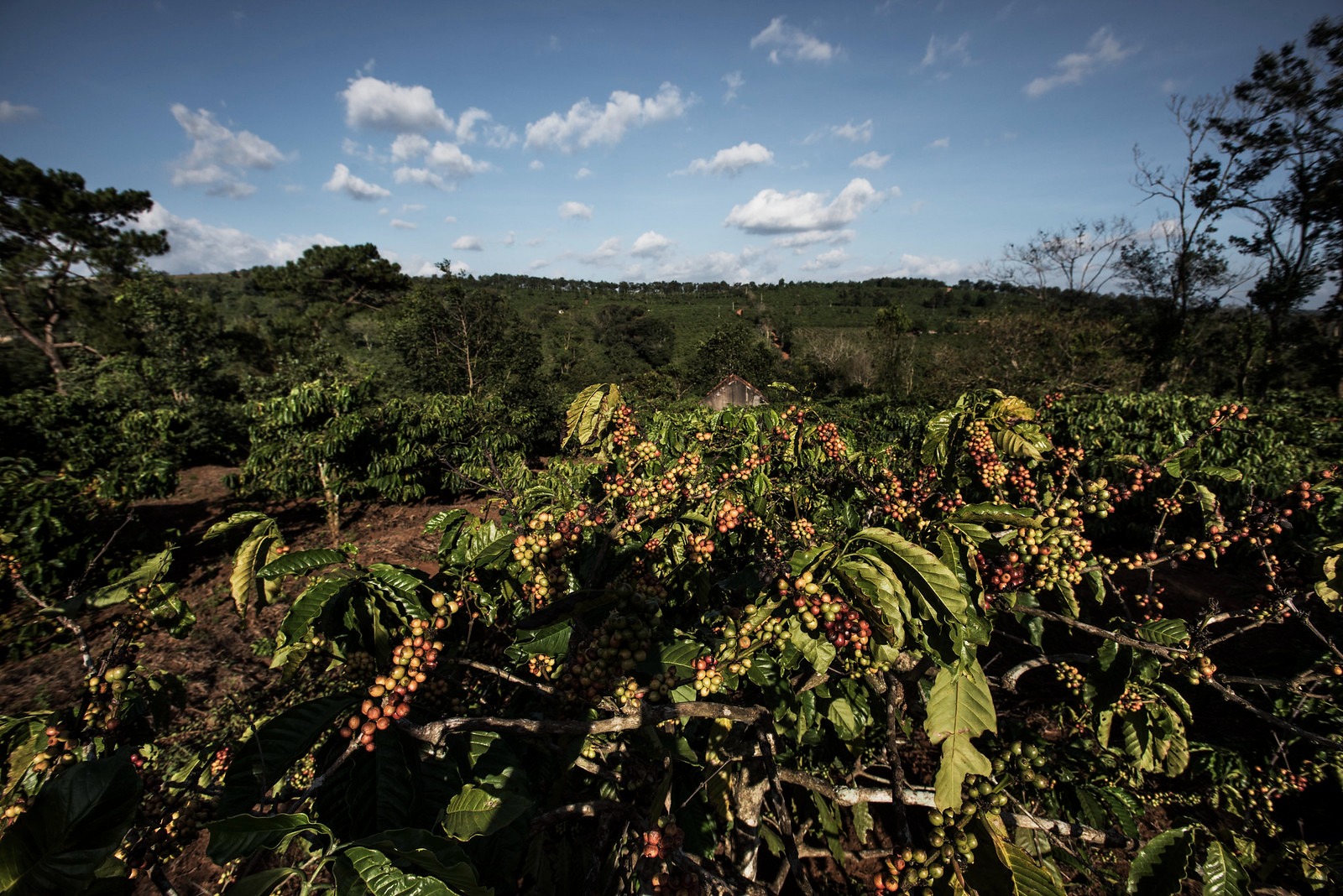
Natural conditions and climate in the Central Highlands, Vietnam have satisfied the coffee industry in many ways
Water is the decisive factor for high productivity of coffee farmers in Vietnam. Basalt soils in the Central Highlands provide this region with a large amount of groundwater replenished every year through monsoon rains. Rainfall generally sufficient for Robusta coffee, but unevenly distribute every year (meaning that Robusta coffee needs irrigation to achieve high yields).
Studies in Dak Lak province, home to the country’s largest Robusta coffee growing area and 60 percent of Vietnam’s coffee production, have estimated that for every one hectare planted of Robusta coffee, demand The annual water demand is from 500m3 to 3000m3. However, the studies – have demonstrated that using only 320 liters per plant per watering, instead of 600 liters to 900 liters, is sufficient to promote flowering and farmers over-watered on average 230% – D’Haeze, & associates
2. Vietnam Robusta Coffee ‘friendly’ to farmers
Robusta coffee is a versatile and easy-to-grow crop. Yields can control by varying water sources, fertilizers, and farming practices such as pruning. Vietnamese farmers have adopted many successful strategies to maximize profits from Robusta.
Vietnam Robusta coffee flowers in the dry season, so it is necessary to water a lot to break the dormant stage of flower buds and stimulate flowering and fruiting. The degree of flowering depends largely on the volume of water and the number of waterings applied during the dry season from January to April. After harvesting in December and January, the Robusta pruned to receive sunlight. light and help develop new sprouting sites. Farmers use input management practices (fertilizer & irrigation) to maximize output when Robusta prices are profitable. They can reduce inputs with less damage to the Robusta coffee crop (Arabica coffee will have a big problem if the farming system changes).
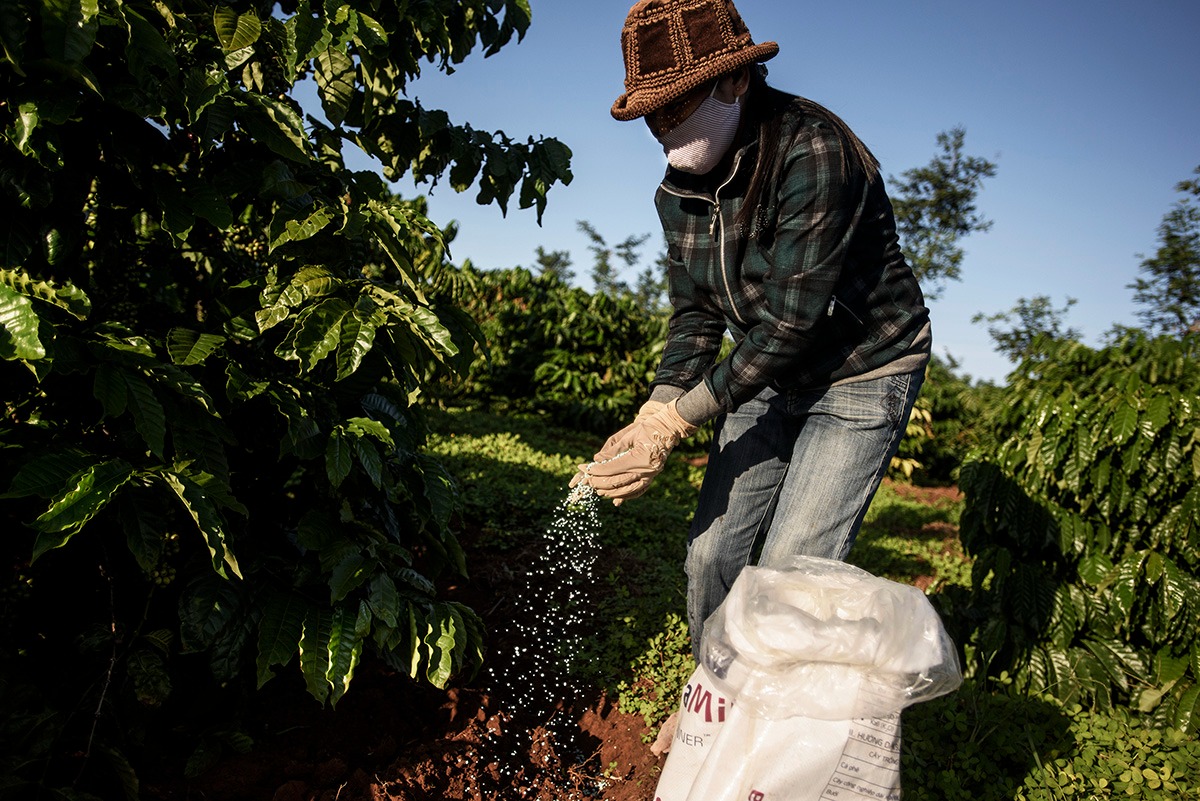
Vietnamese farmers have developed farming techniques to increase flowering and fruiting through large amounts of water and fertilizer at the right time of year.
To rejuvenate Robusta, the plant simply needs to remove its canopy; and this allows it to grow back strong with proper irrigation and fertilizer. Robusta coffee has few pest problems – as its name “Robusta”. Moreover, processing Robusta coffee is very simple; It can store and transporte for a long time without damage.
3. Intensive farming techniques
Vietnam’s Robusta coffee industry has adopted a very intensive production system. At the heart of this is an understanding of the physiology of Robusta. It may seem insignificant, but Vietnam is one of the few countries that systematically irrigate coffee beans. This stems from the fact that Robusta grown in most of Southeast Asia; but the profits from Robusta considered not high enough to warrant intensive production and irrigation. Meanwhile, our industry has the view that: Even a low-value commodity can be profitable if it is developed intensively.
Balanced irrigation practices & heavy use of chemical fertilizers have resulted in world-class coffee yields. Many Vietnamese farmers actually get over 3.5 tons/ha. Neighboring Asian countries have much lower average Robusta yields such as Indonesia 0.5 tons/ha, Laos 0.4 tons/ha and Thailand 0.8 tons/ha.
A balanced rainfall distribution in the Central Highlands can ensure reasonable fruit set, but because the dry season coincides with flowering time and because there is water for irrigation, farmers can exploit this to increase fruit set (there number of watering/drying cycles to increase fruit setting). Combined with skillful pruning to create a tree structure that maximizes fruit number, leaf area, coupled with the heavy use of fertilizers has resulted in world-class Robusta yields.
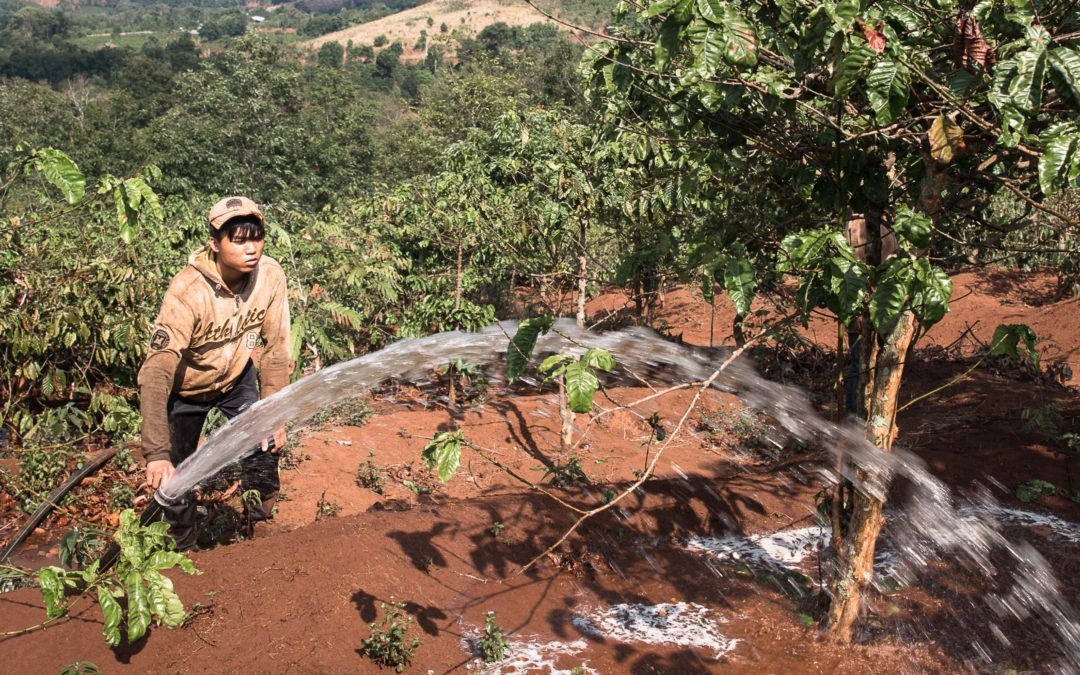
Water resources are a key factor in the success of the Vietnamese coffee industry. But the reality shows that water is of little concern to use economically & efficiently
Robusta irrigated by a micro-basin system. That is, around each tree built a watering basin with dimensions of 2.6m x 2.6m x 0.2m deep. Farmers use a pump system. to provide up to 900 liters per tree. Irrigation begins in the Central Highlands around the second half of January; and continues for a period of 20 to 25 days, until the end of the dry season in April.
Conclusion and vision
Vietnam has developed a very successful Robusta monoculture model. With high productivity is the key to profitability. The success associated with Robusta coffee trees focuses on a few key points mentioned above, but there are still many other important factors such as, the system of harvesting – processing, marketing – trade and the role of the producers. government organization,.. has not been specifically described. Therefore, readers can refer to the original to get a more comprehensive view of the development of Vietnam Robusta coffee.
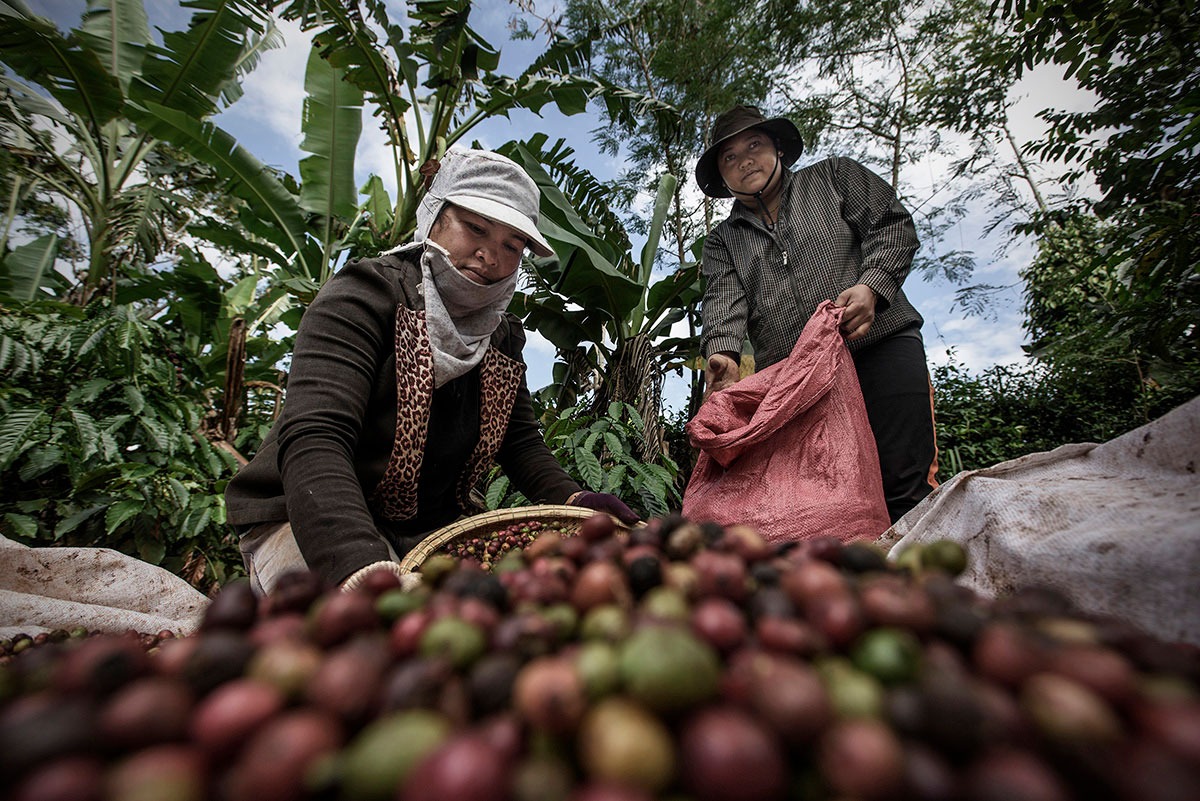
Vietnam has developed a robusta production system that makes it one of the effective Robusta farming systems in the world.
Growth of Vietnam Robusta coffee tree is not “free”, both for people and the environment. Many questions raised about the sustainable growth of the industry; Do ethnic minority groups in the Central Highlands receive their fair share of economic benefits from the coffee boom? In addition, deforestation, land degradation and water depletion due to coffee intensification are also issues of concern. On a global scale, Vietnam’s spectacular growth has been achieved by taking market share away from other producers; mainly African countries, rather than outpacing growth in the market.
Some lessons seem to have been learned about the danger of monoculture. Many farmers are trying to diversify their crops to reduce the risk of coffee price shocks due to market fluctuations. Long-term strategies are needed to protect farmers from the inevitable future fluctuations in world coffee prices.
——————————————————————————————————-
We are here to match your requirement. Do not hesitate to contact us for the best price!
PRINCE COFFEE
ADD: 41/49 Huynh Thuc Khang Street, Dong Da District, HaNoi, VietNam
EMAIL: sales@fineco.com
HOTLINE: +84 966420187 (WHATSAPP/VIBER/ZALO)



